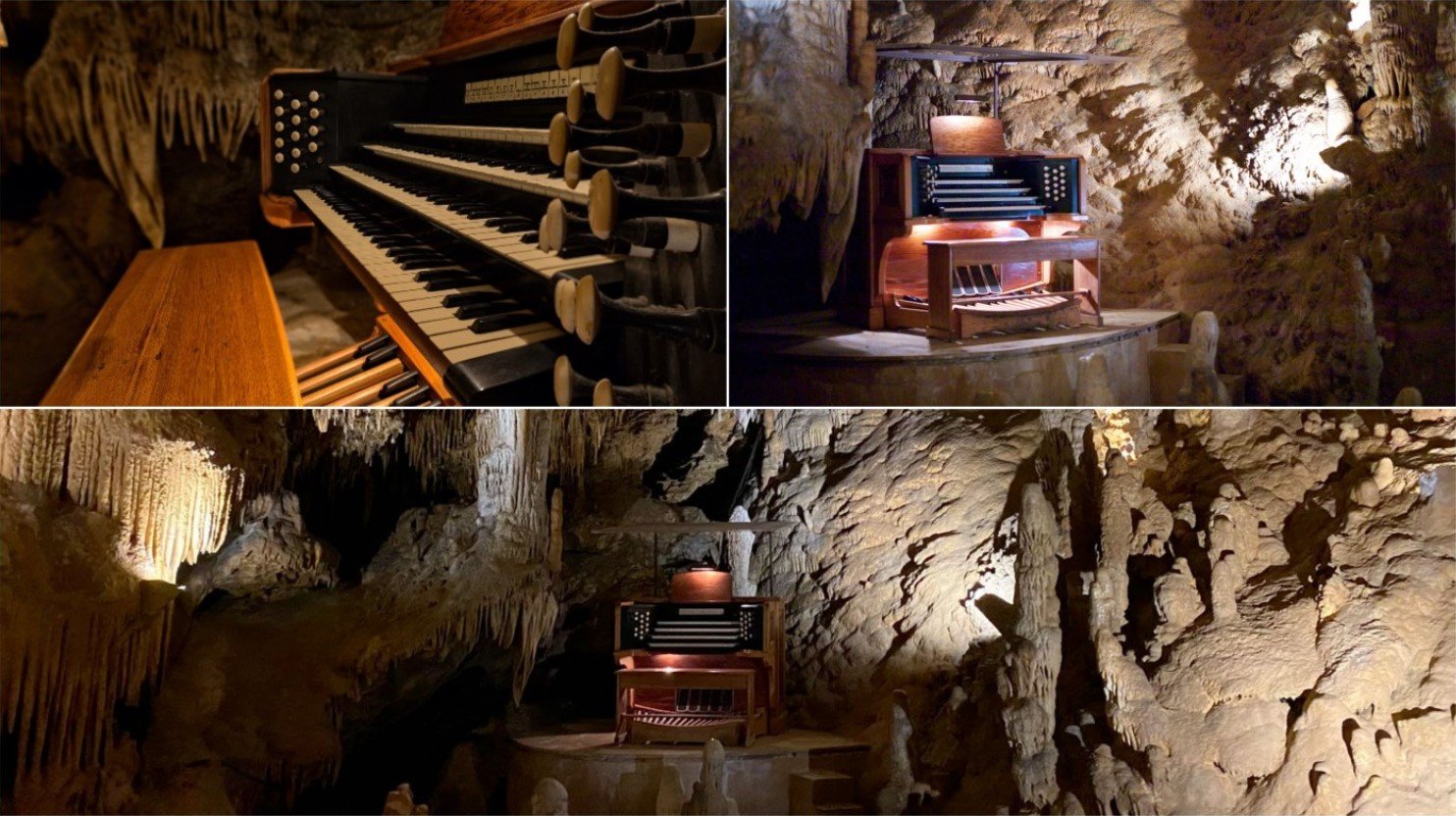If you would love to see the largest musical instrument in the world, take a trip to Virginia. Shockingly, the massive sound producer won’t be found in a church, public building, or concert hall but in the most unlikely place – a cave, precisely Virginia’s Luray Caverns.
Since its thrilling discovery in 1878, the Luray Caverns, located in the small town of Luray in Virginia’s Page County, has remained a top tourist destination. Formerly known as the Luray Cave, the landmark, which is the largest of its kind in Eastern America, is notably unique.
The cavern boasts exciting pathways decorated with mudflows, columns, golden rock formations, stalagmites and stalactites, flowstones, and mirrored pools. Its pool of glassy water offers a captivating illusion of a stone city beneath the water.
Amid these impressive qualities, one more characteristic stands out – the sounds of the stalactites. It was Leland Sprinkle who first discovered that the calcium carbonate deposits that hang from the cavern’s caves had this attribute.
“Leland Sprinkle came through the caverns with his son on his fifth birthday. They would take a little rubber mallet and play a little song on the stalactites. And he got the idea of building an organ,” says Larry Moyer, who has been a long-time worker at the cave.
Sprinkle built the organ in 1956, and to date, the instrument has maintained its enviable status as the largest musical instrument in existence, spanning 3.5 acres of the cave. Today, visitors follow several tunnels to The Cathedral, the chamber of the cavern where the organ, called The Great Stalacpipe Organ, resides.
The name is a mixture of the words stalactite and pipe organ. However, in reality, it is a percussion instrument. The instrument was built to replicate the sound production mechanism the Sprinkles previously employed.
Each key of the organ is connected to a small electric hammer. When struck, each key transmits the movement to its hammer, which will then hit at stalactites to produce a distinct sound.
Moyer, who has worked at the caverns for 42 years since his teens, describes the impressive framework of sound production. “There’s miles and miles of cabling down here for it. The electronics, we build ourselves. There’s no, uh, great stalactite pipe organ store, so we can’t go buy parts for it.”
There is every tendency for the instrument and its network of cables to fail in such a damp environment. Moyer’s job is to ensure that the instrument remains in great condition, a responsibility he has carried out with great diligence through the decades.
Moyer’s labor, which he does mostly at night, is the reason visitors meet a functional instrument every time they pay a visit. Now, as he inches closer to his retirement, he has two apprentices, Ben Caton and Stephanie Beahm, who are to learn the ropes and draw from his deep well of knowledge and experience.
By the time he bids farewell to The Great Stalacpipe Organ, his two apprentices should have been grounded enough to take the saddle of one of the most important jobs in the world.






























